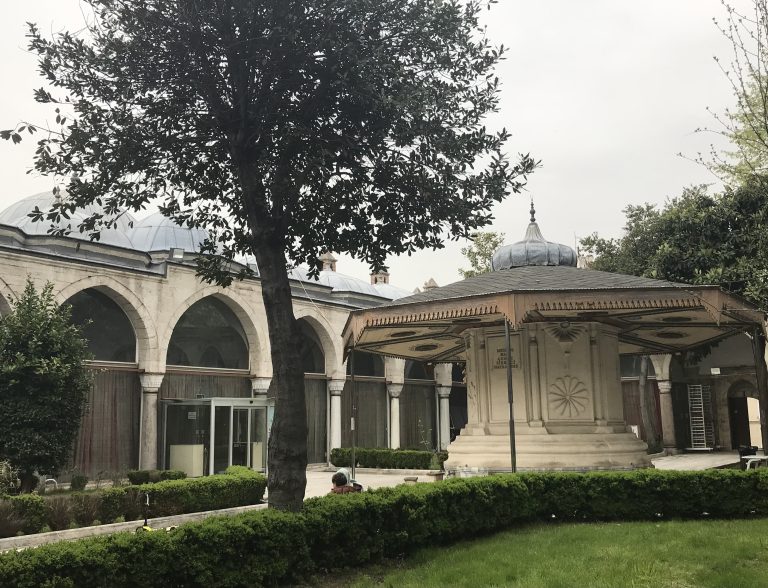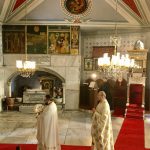“Cannon Gate”
Not to be confused with Topkapı Sarayı, the Ottoman palace in Sultanahmet, Topkapı is the area around the “Cannon Gate” on the city’s great Land Walls which those with long memories will remember as the site of the chaotic old bus station that preceded the current one at Esenler.
It’s worth visiting not just to inspect the remains of the Walls but also to visit the new Panorama 1453 History Museum that aims to bring to life 29 May 1453, the day when the Ottomans finally broke through the Walls just north of this gate to seize Constantinople from the Byzantines.
Around Topkapı

Otherwise known as the Gate of Romanus, Topkapı is so named because it was here that the Hungarian engineer Urban placed the giant cannon that he had designed to blast a way through the Walls and hasten the defeat of the Byzantines.
Across the busy main road (use the underpass) from the gate is a large park dotted with small mosques which is home to the Panorama 1453 History Museum (open daily, admission TL500), one of the projects that came to fruition just in time for the celebrations when İstanbul became the European City of Culture in 2010. With lots of bangs and flashes, it’s a great place to bring children, especially boys, who are struggling to make sense of the ruined Walls although unfortunately most of the information provided in the corridors leading to the 360-degree panoramic recreation of the last day of Byzantium is in Turkish only.
Of the small mosques here, the most interesting is the Takkeci İbrahim Ağa Cami although I’ve never found the doors unlocked. Built in 1591 for a man who made skullcaps (takkes) for a living, this is the only wooden mosque in the city to have survived the many fires more or less intact, complete with its internal dome. The İznik tile collection inside is said to be wonderful.
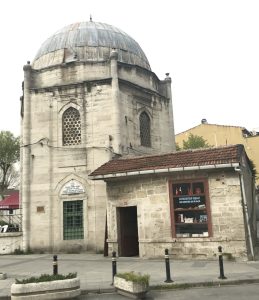 More readily accessible on the Old City side of the Wall is the lovely Gazi Ahmed Paşa Cami, a work of Sinan dating back to 1554 which boasts a large and very peaceful courtyard as well as some especially beautiful and unusual İznik tiles above the windows. Most of the columns used in the porticoes appear to have come from lost Romano-Byzantine buildings in the vicinity. Sadly, insensitive restoration has resulted in all its elegant porticoes being closed in with Pimapen windows and drapes. The tomb of Gazi Ahmed Paşa stands apart from the mosque on Topkapi Caddesi.
More readily accessible on the Old City side of the Wall is the lovely Gazi Ahmed Paşa Cami, a work of Sinan dating back to 1554 which boasts a large and very peaceful courtyard as well as some especially beautiful and unusual İznik tiles above the windows. Most of the columns used in the porticoes appear to have come from lost Romano-Byzantine buildings in the vicinity. Sadly, insensitive restoration has resulted in all its elegant porticoes being closed in with Pimapen windows and drapes. The tomb of Gazi Ahmed Paşa stands apart from the mosque on Topkapi Caddesi.
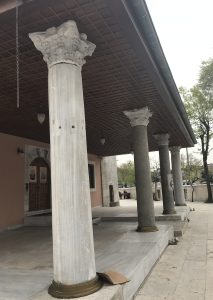
To find the mosque walk into the Old City along busy Turgut Özal Millet Caddesi, passing on the right the small and grubby Mustafa Çavuş (Manastır) Mescid which appears to have started life as a 13th or 14th-century Byzantine church. Across the road is the small 16th-century Kürkçübaşı Ahmet Şemsettin Cami (Chief Furrier’s Mosque) which is mainly of interest for the curiosity of the reused Byzantine columns and capitals in its portico, and the sundial etched into the minaret. Behind its small graveyard the dervish tekke that gave its name to the district (Pazar Tekke, Sunday tekke) still survives in a neglected condition. It was originally built in the 16th century by Katip Mehmet Efendi but rebuilt several times over the ages before becoming a base for soldiers during the First World War. A single dervish continued in occupancy into the 1950s but now the residential parts of the complex have been replaced by a Shell petrol station!
Walk up beside the mosque and then turn right at the end for the Gazi Ahmed Paşa Cami.
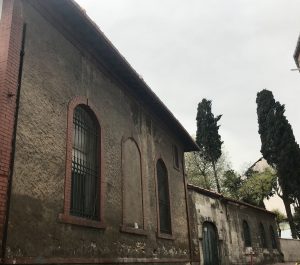
Transport info
There is a handy tram stop at Topkapı-Pazartekke for those who have not arrived on foot along the Walls.
Nearby areas
Mevlevihanekapı
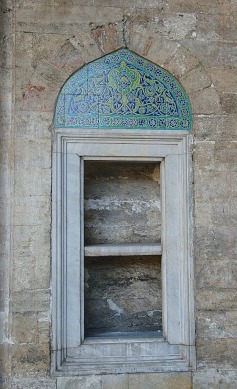 Gazi Ahmed Paşa Cami
Gazi Ahmed Paşa Cami
